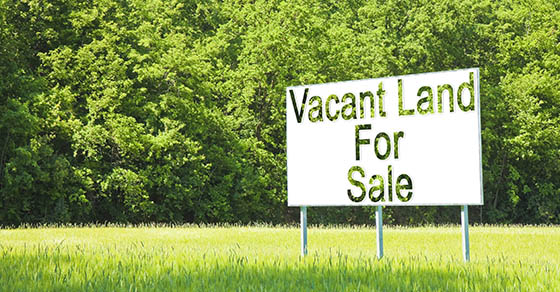Let’s say you own one or more vacant lots. The property has appreciated greatly and you’re ready to sell. Or maybe you have a parcel of appreciated land that you want to subdivide into lots, develop them and sell them off for a big profit. Either way, you’ll incur a tax bill.
For purposes of these examples, let’s assume that you own the vacant land directly as an individual or indirectly through a single-member LLC (SMLLC), a partnership or a multimember LLC that’s treated as a partnership for federal income tax purposes.
Here are a couple of scenarios and a strategy to consider.
Scenario 1: You simply sell vacant land that you’ve held for investment
If you’ve owned the land for more than one year and you’re not classified as a real estate dealer, any gain on sale will be a long-term capital gain (LTCG) eligible for lower federal income tax rates. The current maximum federal rate for LTCGs is 20%. You may also owe the 3.8% net investment income tax (NIIT) on all or part of your gain and maybe state income tax, too.
Scenario 2: You develop a parcel and sell improved lots
In this case, the federal income tax rules generally treat a land developer as a real estate dealer. If you’re classified as a dealer, the profit from developing and selling land is considered profit from selling inventory. That means the entire profit — including the portion from any pre-development appreciation in the value of the land — will be high-taxed ordinary income rather than lower-taxed LTCG. The maximum federal rate on ordinary income recognized by individual taxpayers is currently 37%. The 3.8% NIIT may also be owed and maybe state income tax, too. So, the total tax hit might approach 50% of the gain.
S corporation entity strategy to the rescue
Thankfully, there’s a strategy that allows favorable LTCG tax treatment for all the pre-development appreciation in the value of your land. However, any profit attributable to later subdividing, development and marketing activities will be high-taxed ordinary income because you’ll be treated as a dealer for that part of the process. But if you can manage to pay “only” the 23.8% maximum effective federal rate (20% + 3.8%), or maybe less, on the bulk of a large profit, that’s a win. Here’s a three-step plan to accomplish that tax-saving goal.
1. Establish an S corporation
If you’re the sole owner of the appreciated land, establish a new S corporation owned solely by you to function as the developer entity. If you own the land via a partnership, or via an LLC treated as a partnership for tax purposes, you and the other partners can form the S corporation and be issued stock in proportion to your partnership/LLC ownership percentages.
2. Sell the land to the S corporation
Next, sell the appreciated land to the S corporation for a price equal to the land’s pre-development fair market value. As long as the land has been held for investment and has been owned for more than one year, the sale will trigger a LTCG — equal to the pre-development appreciation — that won’t be taxed at more than the 23.8% maximum federal rate.
3. S corporation develops the land and sells it off
Next, the S corporation will subdivide and develop the property, market it and sell it off. The profit from these activities will be higher-taxed ordinary income passed through to the shareholder(s), including you. If the profit from development is big, you might pay the maximum 40.8% effective federal rate (37% + 3.8%) on that income. However, the part of your total profit that’s attributable to pre-development appreciation in the value of the land will be taxed at no more than the 23.8% maximum federal rate.
Seek professional help
The bottom line is if you’re simply selling appreciated vacant land that you’ve held for investment, the federal income tax results are straightforward. But if you’ll develop the land before selling, the S corporation developer entity strategy could be a big tax-saver in the right circumstances. However, it’s not a DIY project. Consult with us to avoid pitfalls.






